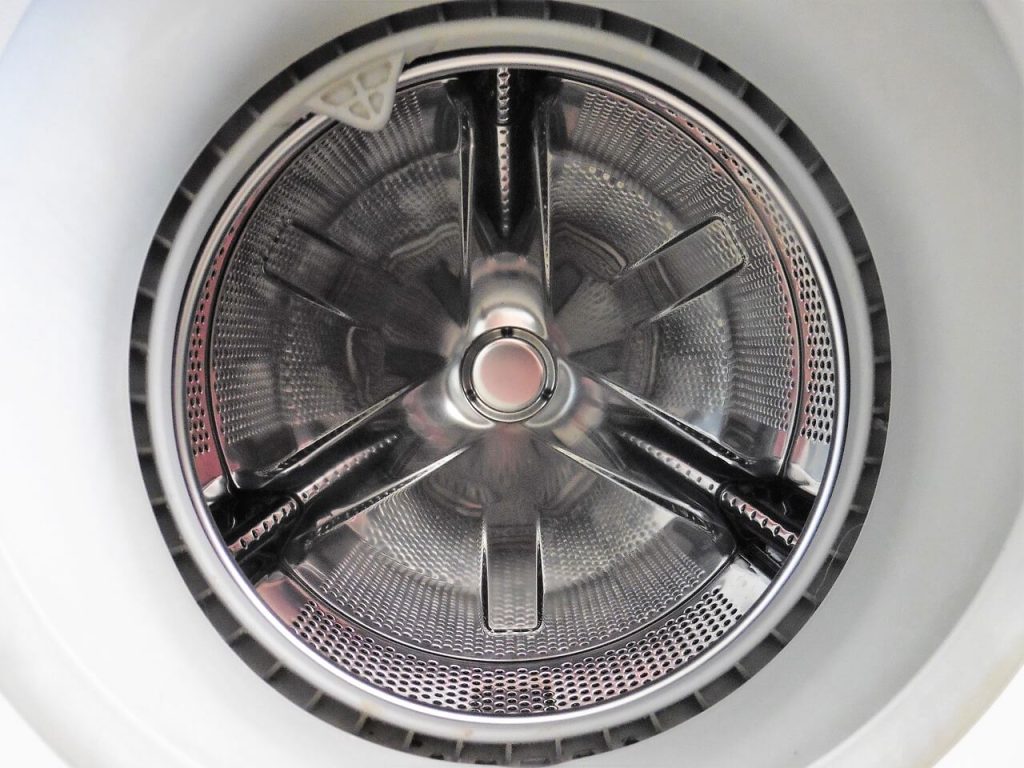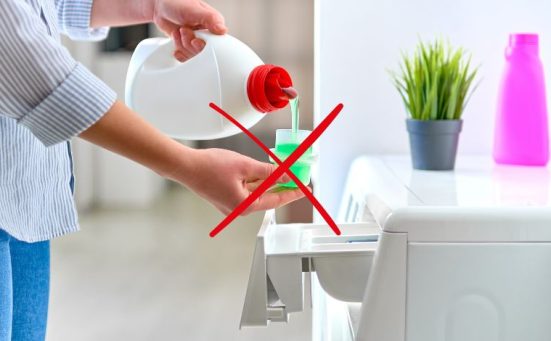
Is It Safe To Manually Add Water To A Front Loading Washing Machine?
Modern automatic front loader washing machines are designed to do it all for you. All you need to do is put your laundry in the drum, add detergent, select the wash programme you require and press the start button.
The washing machine detects the amount of laundry in the drum, the level of dirt on the laundry and adjusts the water levels to suit the load being washed. This allows the machine to effectively wash your laundry using the least amount of water necessary.
This is designed to make automatic washing machines efficient and environmentally friendly. But what if you suspect your washer isn’t using enough water? And you want to add more.
In this article we look at why your appliance might not have enough water, whether it’s possible to add water to a front loading washing machine and what potential problems adding water to your machine might cause.
Why Would You Want To Add More Water To Your Front Loader Washing Machine?

There are a few reasons why you might want to add water to your washing machine which include;
- Clothes Not Cleaning
- Clothes Not Feeling Wet After Washing
- Clothes Not Smelling Fresh After Washing
- Detergent Residue On Laundry
Clothes Not Cleaning
If your clothes are still dirty after running them through a wash cycle, it’s most likely that you selected the wrong cycle. Try washing clothes according to their soil level and choosing a heavy duty cycle.
If you’re washing heavily soiled items they might benefit from a pre-wash before running them through the washer.
Clothes Not Feeling Wet After Washing
The main cause for some of the laundry still feeling dry after the wash cycle has finished is an overloaded drum. If you cram too many clothes in the drum there’s a strong possibility that those in the middle don’t get touched at all.
You should never fill the drum of your machine more than ¾ full to prevent overloading.
Clothes Not Smelling Fresh After Washing
Clothes that don’t smell fresh after washing have either been washed using an incorrect wash cycle, the wrong detergent or have been in an overloaded drum.
Detergent Residue On Laundry
If there is a detergent residue on your laundry after the wash cycle has completed, it’s usually caused by using too much detergent or you live in a hard water area.
Try using less detergent or using a water softener like Calgon in the wash.
With that said, there are times when the washing machine doesn’t get enough water.
Possible Reasons Why A Front Loader Washing Machine Doesn’t Get Enough Water

There are a few reasons why your front loader washing machine doesn’t get enough water. These include;
Low Water Pressure
Your washing machine needs a water pressure of between 20 to 116 Psi (pounds per square inch). Anything less than 20 Psi can cause the water valve to fail. It could also cause the machine to shut down because the sensors detect that there’s not enough water in the drum.
Your local water authority is required to supply water to your home at an adequate pressure. To check this turn on the kitchen tap and time how long it takes to fill a 1 gallon (4.5 litre) bucket. If it’s 30 seconds or less, your home’s water pressure is fine.
Water Inlet Hose Twisted
Your washing machine is connected to the water supply via a hose at the back of the appliance. Typically blue in colour, the water inlet hose should be untwisted.
If it is twisted or kinked, it could reduce the amount of water entering your washer. This could be the reason why your machine isn’t receiving enough water to successfully wash your clothes.
Water Inlet Tap Not Fully Opened
The water inlet hose is connected to a tap which can be shut off to remove the hose etc. If that tap isn’t opened fully it could restrict the flow of water and prevent your washer from filling correctly.
Water Inlet Valve Faulty Or Clogged
The water inlet valve on a washing machine can easily become damaged or clogged. Either way, the only real solution is to replace it. This can be done by an enthusiastic DIYer but is best left to an expert.
When Do You Need To Manually Add Water To The Washing Machine?

If, for whatever reason your washer is not getting enough water to get your laundry clean, you can add water manually. Before we start though, it’s important that you understand exactly what an automatic wash cycle actually is.
Modern Washing Machines Are Pretty Smart Devices
Once you fill the drum with laundry, the washer detects the weight of the load and works out how much water it will need to get it clean.
This allows the inlet valve to open until the sensors detect that the correct amount of water has entered the drum. The inlet valve is then shut off and the washer washes, rinses and drains.
The problem is that in low water pressure situations,the sensors detect a fault, stop the process and the machine displays an error code. It’s at this point that you can add water.
How To Manually Add Water To Your Front Loader Washing Machine
If you need to add water to your front loader washing machine all you need is a funnel of some sort and a jug of water. Then simply do the following;
- Start The Wash As Usual
Load the laundry into the drum, add detergent and select the required wash cycle. Then press the start button and then straight away press the pause button. This allows the washer to calculate how much water it needs. - Fill The Drum With Water
Cut the bottom out of a plastic cup and place it in the detergent dispenser drawer. This is your funnel which will allow you to add water manually to the machine. Slowly pour water in through your funnel until the water level is high enough for the washer’s sensor to detect it and continue the wash cycle. Take care to not get any of the electrics wet whilst pouring water into the funnel. - Allow The Water To Drain
After the wash cycle has completed, allow the water to drain from the machine. Some will drain the water away automatically while others will simply display an error code. If yours drains automatically, wait until all of the water has drained before moving onto the next step. If it displays an error code instead, cancel the wash cycle and then set the washer to the spin cycle. This will drain the water from the appliance. - Rinse The Laundry
Fill the drum with water using the funnel in the detergent dispenser and select a short wash cycle (this can be repeated as many times as it takes to remove all of the soap suds). - Spin The Laundry
Once you’re satisfied that the laundry is fully rinsed, drain the drum and select the spin cycle.
Now that you know how to manually add water to an automatic front loading washing machine you can see it’s very labour intensive and too much like hard work.
We recommend contacting the manufacturer or a technician to check the washer to prevent you needing to do this every time you need to wash your clothes.
SEE ALSO: Does The Washing Machine’s “Capacity” Mean Dry Or Wet Laundry?
Frequently Asked Questions
A front loading washing machine requires a water pressure of between 20 to 116 Psi (pounds per square inch).
Low water pressure does affect a front load washing machine. If the water pressure is low it could take a long time to fill the drum. In many cases the machine would abort the wash cycle.
Front loader washing machines use less water than top loaders because the rotation of the drum ensures that the laundry is passed through the shallow pool of water/detergent at the bottom of the drum. Top loaders on the other hand, need extra water to ensure all of the laundry gets wet during the wash cycle.
Also, follow us on Pinterest ...



